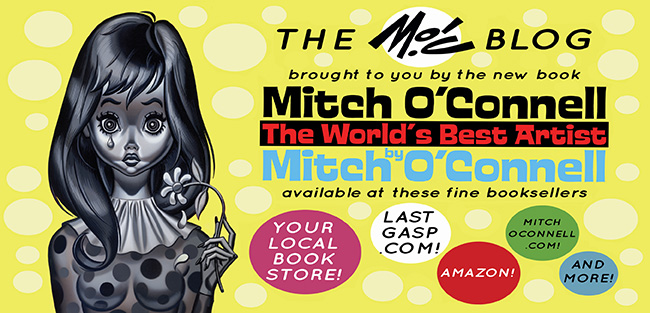Took the whole family to the Art Institute to enjoy the Roy Lichtenstein exhibit (among other things) and had a great afternoon wandering the impressive museum.
I've always enjoyed Lichtenstein's work, probably because it was so relatable when I saw them first as a child, but was soured by the curators attempt to be so heavily handed dismissive of his source material, the actual comic panels he based his most famous and impressive paintings on. These are beautiful original panels, that I'm sure he was impressed by when choosing them, but the accompanying narrative posted by the hanging Pop Art copies calls them "banal" and "commonplace."
Wouldn't it to be easier to give credit where credit is due than claiming that only by Roy's grace they were transformed into actual art? The link below shows many "before and after" examples and, in my opinion, the reference usually shows a better understanding of what there're illustrating than the often "off" interpretations that sometimes don't seem to grasp what the reasoning is behind any line placement.
I can't believe Roy himself would be so arrogant and condescending. If it were so easy, why didn't he just make up his own art? Of course I'm holding him to the high standard he's been lifted to in the art world with his paintings selling for millions and the interest in keeping the bounty reaped from the Lichtenstein industry, the touring art show, the books and the merchandising from mugs to calendars going full steam.
When you're standing on someone elses shoulders, it's just plain bad manners to pee on them too.
http://davidbarsalou.homestead.com/LICHTENSTEINPROJECT.html
Subscribe to:
Post Comments (Atom)



I was also dismayed by the implicit and explicit condescension of the the curators of the exhibit. I doubt they're even aware of it -- their bias and double standard came with their degrees. There is fine art and low, and commercial illustration is inherently lower because it serves another master. But Lichtenstein himself explains that because his first Mickey Mouse painting sold, he did another one, and it sold, so he continued, the paintings now selling for millions. This is the definition of a commercial artist and commercial art. But the academics see nothing wrong with that, as long as you play by the rules of the gallery business. If you think about it, Roy and his ilk are the 'one percenters' of the art world.
ReplyDeletecall it craft, make 1,000 dollars, call it art, make a million dollars. Post-Warhol, It's all about what the market will pay.
ReplyDeleteI don't have a specific reference at hand to back it up, but it's always been my sense that Lichtenstein respected the original material he worked from--or at least understood that he was working from well-crafted commercial art, which he would never have disdained. I think the curating crew are responsible for the condescension. I do wonder how old the author of this wall card is--my sense is that younger art academics have a lot more respect for comics and similar "mass art."
ReplyDelete